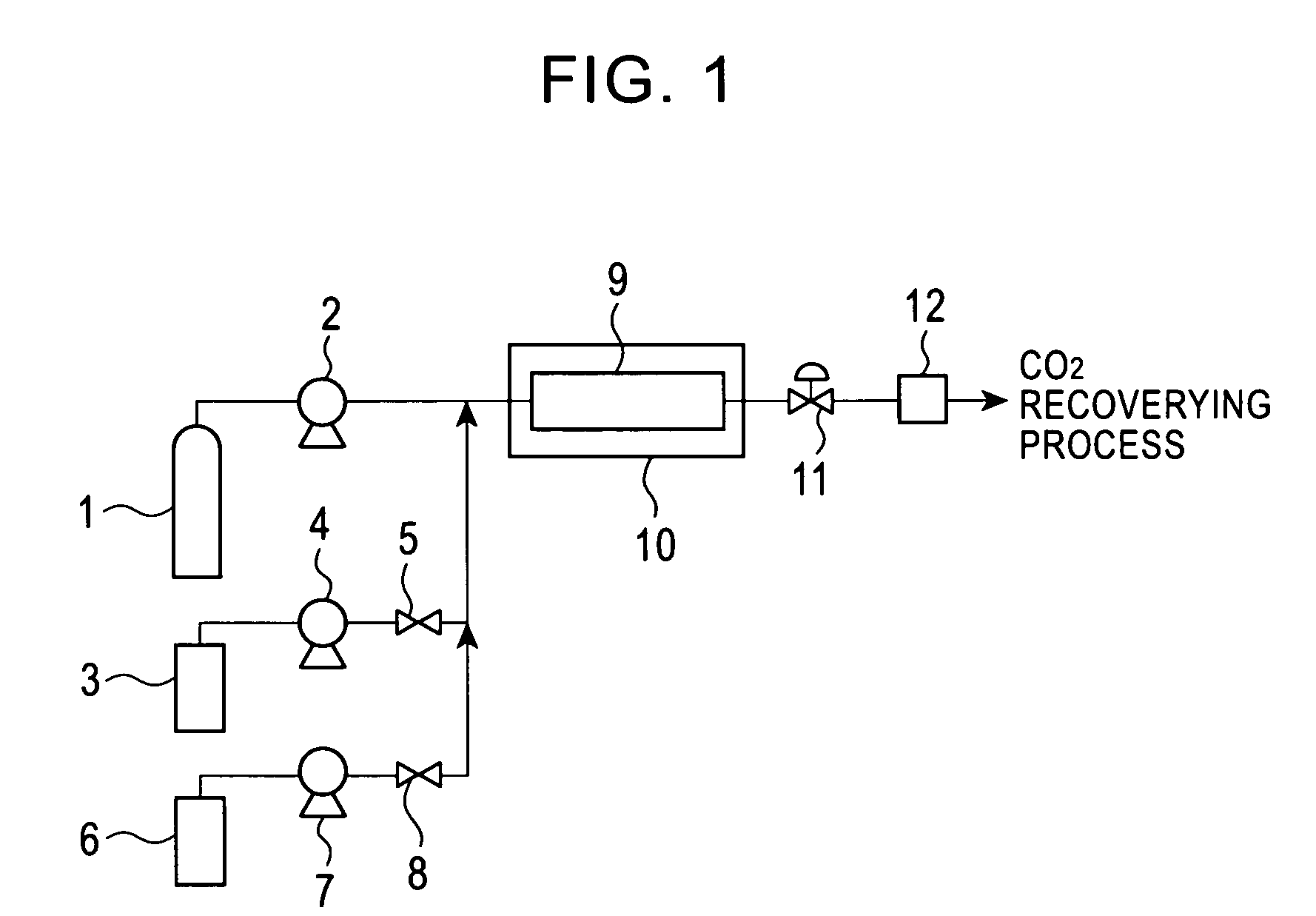Method for cleaning microstructure
- Summary
- Abstract
- Description
- Claims
- Application Information
AI Technical Summary
Benefits of technology
Problems solved by technology
Method used
Image
Examples
experimental example 1
[0035] An organic silicone MSQ raw material was applied to a Si wafer by a spin-on process and then dried to form a MSQ porous Low-k film. Then, a photoresist pattern for ArF is formed on the film, and exposure and development were performed to form a wafer sample having a resist pattern in which lines and spaces (width 130 nm) alternately appeared, and a wide pattern of about 10-μm square. The Low-k film was patterned by etching with fluorine-based gas and then subjected to ashing with hydrogen plasma to remove the resist. As a result of observation of the wafer surface after ashing, resist residue was observed on the lines and the wide pattern on which the resist had been applied.
[0036] The sample after ashing was placed in the high-pressure vessel 9 in the apparatus shown in FIG. 1, and then the cover of the high-pressure vessel 9 was closed. Then, carbon dioxide was supplied to the high-pressure vessel 9 from the liquefied carbon dioxide cylinder 1 through the pump 2. The press...
experimental example 2
Comparative
[0050] Cleaning experiment (Run Nos. 19 and 20) was carried out by the same method as in Experimental Example 1 except that tetramethylammonium fluoride (TMAF) was used as a cleaning component in place of hydrofluoric acid. The results are shown in Table 2.
TABLE 2Operating conditionCleaning agentCleaningEvaluation resultTemperaturePressurecomposition (% by mass)timeLow-kfilmRun(° C.)(MPa)CO2TMAFAlcohol(minute)DetergencyDamageResidue195015950.013EtOH4.9871AAB205015950.013EtOH4.9873ACB
example 3
Dielectric Constant
[0051] An organic silicone MSQ material was applied to a Si wafer by a spin-on process and then heated to form a MSQ porous Low-k film (dielectric constant=2.5). The wafer on which the porous Low-k film was deposited was cleaned with a cleaning agent composition containing 95% by mass of CO2, 0.01% by mass of HF, 0.01% by mass of H2O, and the balance composed of ethanol at an operating temperature of 50° C. and a pressure of 15 MPa for 1 minute. After cleaning, Al was vapor-deposited on the porous Low-k film and measured with respect to the dielectric constant. As a result, the dielectric constant k was 2.5.
[0052] Separately, a wafer on which a porous Low-k film was deposited was wet-cleaned with an aqueous ammonium fluoride solution (a commercially available aqueous solution of about 10% remover) for 1 minute, rinsed with ultrapure water, and then spin-dried by blowing nitrogen at room temperature. As a result of the measurement of the dielectric constant as de...
PUM
| Property | Measurement | Unit |
|---|---|---|
| Percent by mass | aaaaa | aaaaa |
| Percent by mass | aaaaa | aaaaa |
| Temperature | aaaaa | aaaaa |
Abstract
Description
Claims
Application Information
 Login to View More
Login to View More - R&D
- Intellectual Property
- Life Sciences
- Materials
- Tech Scout
- Unparalleled Data Quality
- Higher Quality Content
- 60% Fewer Hallucinations
Browse by: Latest US Patents, China's latest patents, Technical Efficacy Thesaurus, Application Domain, Technology Topic, Popular Technical Reports.
© 2025 PatSnap. All rights reserved.Legal|Privacy policy|Modern Slavery Act Transparency Statement|Sitemap|About US| Contact US: help@patsnap.com


